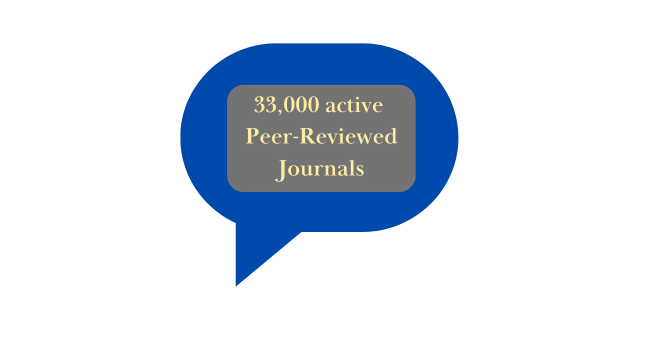
Do you also feel stressed out because of the treasure hunt you have to do for a journal? It is actually a tough job to find the perfect journal for your research paper without any professional help. However, this work has become simple and sorted. Journal suggesters are there in the market to help you with journal suggestions for your research paper.
Y’all know how hard it can be to keep up with journals sometimes? You might even end up burning out from all those papers! And the worst part about it is that there are over 33,000 scientific journals out there today. Oh yeah, and they’re all publishing stuff on everything imaginable—what do you even do about that? That’s why journal suggesters are so important; they can help make your life easier by narrowing down possible selections for you. There are many service providers out there who can help you with journal suggestions. Journal suggestion services reduce the investment of your time and efforts.
In this blog, we shall explore why you need a journal suggestion tool for your academic research, how it can ease the publication process, and statistics that emphasize on importance of choosing the right journal.

As a researcher in the early stages of your career, you have an important paper that is ready for publication. However, you start searching for an appropriate journal but soon get lost among millions of options. Should you choose a high-impact journal even though it has lower acceptance rates? Or should you opt for a more specialized journal whose chances of acceptance are better?
Statistical Snapshot:

- As of 2023, there are over 33,000 active, peer-reviewed journals across various disciplines.
- The acceptance rates for top-tier journals can be as low as 5-10%, making it crucial to target the right publication.
If you do not have a tool to guide you in this complicated territory, it may cause you disappointments and hold-ups and sometimes you would be rejected. A journal suggester can be your compass for locating the best match for your work.
In terms of helping researchers find the best journals for their papers, a journal suggester is an online service or platform. These tools analyze different parts of your paper, such as its title, abstract, keywords, or even the whole text, and then generate a list of journals that are likely to be interested in your work.

The majority of these journal suggesters work in the same way. They use algorithms to align the content of your paper with its scope, focus, and preferences as represented by different journals. The following steps describe how they function:
1. Input Your Manuscript Details:
- You typically need to provide your manuscript’s title, abstract, and keywords. Some advanced tools allow you to upload the entire manuscript for a more detailed analysis.
2. Algorithmic Matching:
- It evaluates your submission against a collection of periodicals, taking into account elements like the journal’s topic, its influence score, rate of acceptance, and the time it takes for decisions to be made.
3. Journal Suggestions:
- As per the scrutiny, the instrument creates a roster of likely periodicals, frequently according to pertinence ranking. Additionally, there exist certain instruments that offer extra measures like acceptance rates, impact factors, and submission guidelines.
4. Refinement Options:
- Many tools allow you to refine the results based on your preferences, such as prioritizing open-access journals or excluding journals with high publication fees.
Additional Read: Learn About How You Can Find the Perfect Journal Match For You.
The effort involved in research is enormous; hence, you do not want to waste your time looking for the right journal for weeks or even months. By using a journal suggester, one can considerably reduce the amount of time needed to complete this trickier task by just providing a short list of possible journals.

Statistical Insight:
- Data underscores that writers devote two to three weeks to picking the right magazine. With journal recommendations, this period can be reduced to a few hours. The survey carried out by American Journal Experts(AJE) also affirms this statement.
It is essential to recognize that if you submit your manuscript to a journal that does not conform to your research area, it will be rejected promptly, which means wasting your precious time as well as the editor’s. Taking advantage of a journal suggester ensures that the specific journal corresponds well with the content of your paper since it will be submitted so that it has a higher chance of acceptance.
Statistical Insight:
- As indicated by an article published in Scientometrics, papers that go to proper journals have 20-30 percent more chances of being accepted than those sent to unrelated journals.
Picking the perfect journal not only raises the possibility of being accepted but also guarantees that your research is delivered to the right audience. Additionally, this may result in increased citation rates, improved visibility, and more collaboration opportunities.
Statistical Insight:
- Research published in high-impact journals is cited up to 5 times more frequently than research published in lower-impact journals, according to a report by Elsevier.
Different researchers have different priorities. Some may prefer open-access journals, while others might prioritize journals with high-impact factors. A journal suggester allows you to customize your search based on these preferences, ensuring that your specific needs are met.
Statistical Insight:
- The Directory of Open Access Journals (DOAJ) reports that there are currently over 17,000 open-access journals, making it essential to have a tool that can filter these options based on your preferences.

When it comes to various journal suggestion tools, selecting the right one can be a challenge. Here are some factors to think about:
1. Expansive pool of journals: Check that the software is comprehensive across many fields.
2. Precision: The program should suggest precise and appropriate advice concerning your paper.
3. Simplicity in usage: One should have an easy-to-use interface without the need for vast expertise.
4. Extra attributes: Some applications come with added things like submission procedures, acceptance ratios, as well as impact factor measures which are very useful.
A few remarkable periodical suggestion tools are:

1. Journal Finder (Elsevier): Elsevier Fingerprint Engine is used here to compare manuscripts with other journals of Elsevier.
2. Journal Suggester (Springer): Springer’s large number of periodicals are catered for in this specific tool like Elsevier.
3. Journal Selector (Edanz): A powerful device that indicates names on papers according to the title and summary provided.
4. JANE (Journal/Author Name Estimator): A free service that suggests the best journals by using only your title and abstract.
As artificial intelligence and machine learning continue to advance, we can expect journal suggester tools to become even more sophisticated. Future developments may include personalized journal suggestions based on your publication history, integration with academic networking sites, and real-time updates on journal policies and impact factors. You can get journal suggestion services from us that will help you in relieving stress.
In the cut-throat universe of academic publishing, tools are very important. A journal suggester not only saves you considerable time and effort but also makes it more likely that you will publish in the right journal. With the chance to customize your search to your own needs and tastes, these tools have turned out to be an integral part of the research process.
With the growing number of academic journals, it is clear that there will be an increasing demand for a dependable journal suggester. Researchers must take advantage of these journal suggesters as they can either make their career or destroy it.
So the next time you have a research paper ready for submission, use a journal suggester to find a suitable journal for your research work. It may be the secret to unlocking your academic potential and ensuring that your work gets to where it is supposed to be.